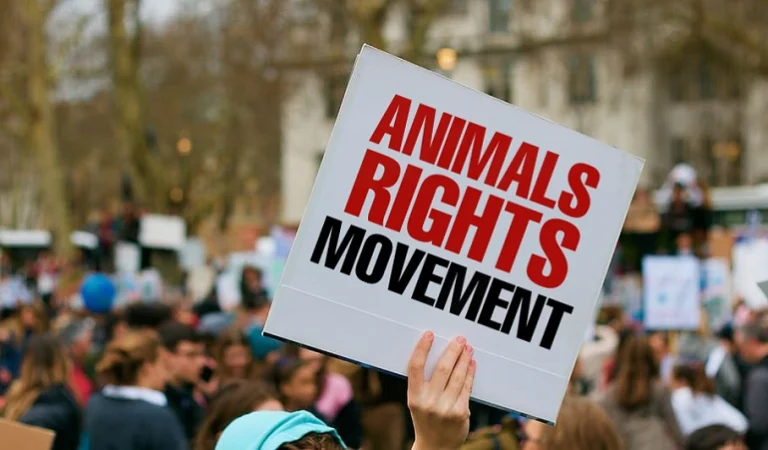A deeply disturbing video posted on TikTok has sent shockwaves across social media, sparking widespread condemnation from animal rights activists and pet lovers alike. The viral clip shows a woman casually seasoning and placing live blue crabs into a glass-bottom air fryer before cooking them for 15 minutes — all while documenting their slow, agonizing demise for her audience.
The video, initially posted last week, has already racked up millions of views and triggered an intense ethical debate about animal cruelty, social media accountability, and the treatment of marine life.
“Crabs Are Not Vegetables!” – Animal Rights Activist Speaks Out
One of the most vocal critics of the video is Varun Virlan, the digital media director at Animal Save Movement, a global animal rights organization advocating for the ethical treatment of all animals — including marine species often left out of legal protections.
Virlan didn’t hold back when speaking to the press, saying he was “absolutely horrified” by the clip, and labeled it a blatant act of cruelty. “This is exactly why crabs and other marine animals deserve the same level of protection we extend to cats, dogs, and horses,” he emphasized. “They are not vegetables. They are sentient beings capable of feeling pain.”
He pointed out that the abuse didn’t begin with the air fryer — it started the moment these creatures were pulled from their ocean habitat. According to Virlan, the video not only trivializes the suffering of these animals but normalizes cruelty for online engagement.
“The TikToker did it for views — and that’s unacceptable,” he added. “This is a glaring example of how harmful social media can be when shock content goes unchecked.”
The Problem With Viral Cruelty and TikTok’s Role
The controversial video highlights a growing concern about the lack of moderation and ethical responsibility on platforms like TikTok. Virlan stressed that TikTok must take accountability for allowing disturbing content involving animal cruelty to be published and amplified through their algorithm.
This isn’t the first time a video involving the mistreatment of animals has gone viral. In fact, social media has seen a disturbing trend of users posting content involving live animals in precarious or painful situations — often masked as “cooking” or “educational” content to avoid content moderation filters.
Despite community guidelines that prohibit cruelty or harm to animals, many users find loopholes to game the system and gain clout, engagement, and even monetization.
“If you’re outraged by what happened to those crabs, you need to realize this isn’t an isolated incident — it’s a systemic issue,” Virlan warns. “Use that anger to fuel change and demand better laws, better tech oversight, and more empathy.”
Howie the Crab’s Mom Responds: “Crabs Deserve Better”
Laura Porter — known to many online as Howie the Crab’s Mom — also joined the chorus of voices calling for change. Howie, a pet crab with a massive fanbase on Instagram and TikTok, has become a symbol of crustacean intelligence and compassion. Porter says she was heartbroken after seeing the viral air-frying video.
“I want to believe the person who posted that video doesn’t understand that crabs can feel pain,” she said, holding back tears in a video response. “But ignorance is no longer an excuse.”
According to Porter, crabs are far more intelligent than people give them credit for. Studies have shown that crabs can:
- Recognize human faces
- Learn simple commands and behaviors
- Experience pain and retain memories of traumatic events
- Communicate using basic gestures and signals
“People treat them like throwaway food,” she said. “But they’re animals, they’re sentient, and they deserve compassion.”
Porter urged viewers not to place live crabs in air fryers or any other appliance that prolongs suffering. “They don’t die quickly — they suffer. That video should never have been allowed to go up, and it should have been taken down immediately.”
Science Says: Crabs Do Feel Pain
Scientific consensus continues to grow in favor of recognizing pain perception in crabs and other crustaceans. According to a comprehensive study from Queen’s University Belfast, crustaceans — including crabs, lobsters, and shrimp — display complex behaviors indicating pain, such as avoiding painful stimuli, protective reactions, and long-term behavioral changes.
The research has prompted countries like the United Kingdom and Switzerland to ban the boiling of live lobsters and crabs without first stunning them. However, the United States still lacks such protective legislation for crustaceans, allowing cooking practices that might cause prolonged agony.
“If it’s illegal to mistreat a dog this way, why is it legal to cook a crab alive?” asked one social media user in response to the video.
Beyond the Air Fryer: Understanding the Full Cycle of Marine Animal Abuse
While the video’s immediate brutality is what captured public attention, experts urge the public to look deeper into the broader cycle of marine animal abuse. From commercial fishing nets that cause immense bycatch and injury, to overcrowded tanks at seafood markets where crabs are stacked on top of each other for days — the cruelty often starts long before the cooking begins.
According to Animal Equality, over 2.7 trillion sea animals are killed each year for food, many of them without any welfare regulations. Crabs are routinely dismembered alive, boiled, or steamed without any pain mitigation methods.
Empathy as the Call to Action
Both Virlan and Porter hope this controversy becomes a wake-up call for society. They encourage people to not only be mindful of what they consume but also to educate themselves on the lives of the animals we often overlook.
“Extend your empathy to all sentient beings,” Virlan said. “If a viral video can upset you, let that emotion guide you to real-world change — choose cruelty-free living, support legislative reforms, and challenge platforms that allow violence for profit.”








